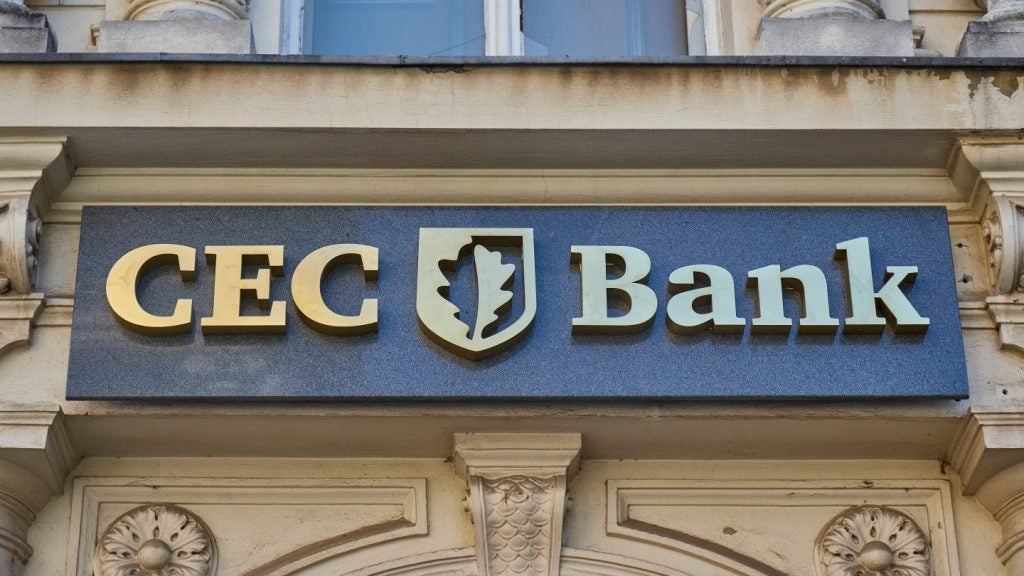of multi-channel direct banking at UniCredit’s retail division
(UniCredit Retail Italy). He says the bank’s goal of selling more
than two million net new retail products online in 2009 is part of
a concerted attempt to boost its cross-sell ratio, currently at 3.4
products per customer, by 10%.
 UniCredit, the largest banking
UniCredit, the largest banking
group in the eurozone by deposits (see RBI 606), is
continuing to develop its multi-channel abilities in its domestic
market and beyond but insists that the freezing of its branch
expansion plans does not signify a wholesale shift in
priorities.
Having been relatively slow to provide a full
set of direct banking offerings to its Italian customers in the
past, UniCredit has got up to speed fast, expanding its ATM
network, launching a nascent m-banking service and transforming its
online banking offering over the past 18 months.
The bank has set up an internal organisation
aimed at sharing direct banking knowledge across its retail markets
in order to expand on its success in Italy. And Carlo Giugovaz,
head of multi-channel direct banking at UniCredit’s retail
division, says the tie-up between the group’s European retail
divisions is already beginning to bear fruit.
Launched in November 2008 and fronted by
Frederik Geertman and Francesco Signoretti, the organisation unites
the marketing and multi-channel heads of UniCredit’s many retail
divisions with a view to co-ordinating strategies for direct
banking across the continent.
An Italian marketing campaign aimed at
emphasising the benefits of direct channel transactions will be
rolled out across UniCredit’s other European markets following the
success of the domestic initiative. The migration programme,
developed over the last four years, has helped UniCredit Retail
Italy raise the percentage of transactions made across direct
channels from 46 percent to 75 percent over the same period.
How well do you really know your competitors?
Access the most comprehensive Company Profiles on the market, powered by GlobalData. Save hours of research. Gain competitive edge.

Thank you!
Your download email will arrive shortly
Not ready to buy yet? Download a free sample
We are confident about the unique quality of our Company Profiles. However, we want you to make the most beneficial decision for your business, so we offer a free sample that you can download by submitting the below form
By GlobalDataThe success of non-branch banking in Italy
means these services will drive the bank’s goal of selling more
than two million net new retail products in 2009 as part of an
attempt to boost its cross-sell ratio, currently at 3.4 products
per customer, by 10 percent.
Giugovaz said that UniCredit’s strong
multi-channel offering, coupled with the ongoing downscaling of its
domestic branch network – it had 4,280 branches as of the end of
December 2008 and will close 300 branches in 2009 as a result of
the Capitalia integration – will not mean the bank neglects its
branch-based roots. “Our strategy is to support the branches by
leveraging their strength – their physical presence and the trust
they provide to the market,” he added.
Nonetheless, Giugovaz is keen to assert that
the bank must move with the times in order to maintain customer
satisfaction. “Nowadays, 75 percent of the contact with the
customer is done through direct channels,” he said. “It is very
important to manage these services effectively – if not, you risk
losing the relationship with the customer. Until a few years ago,
most customers came into the branch at least once a month. Now the
figure is less and less.”
He points to research indicating that up to
two thirds of consumers express a disinterest in branch banking
provided that direct channel services are of sufficient
quality.
The key innovations the bank has planned for
the rest of 2009, then, will focus on improving and expanding these
direct banking services. UniCredit has just launched new sites for
its three Italian banks – UniCredit Banca, UniCredit Banca di Roma
and Banco di Sicilia – as well as a new retail portal, and Giugovaz
said that the planned roll out of its new online banking service
(see RBI 603) remains on track for a Q4 launch.
“We are improving the process of selling on
the public site,” Giugovaz said, adding that UniCredit was working
hard to overcome the problems surrounding banks’ ability to sell
products online without the need for a customer to visit a branch
in order to provide their signature.
That is significant because mortgages and
loans, typically requiring more customer contact than the opening
of a deposit account, are becoming a more significant part of
UniCredit’s direct banking services.
20% of mortgages sold
online
As of the end of 2008, 20 percent of
new mortgages and 10 percent of new loans were sold through the
site. By comparison, new customer accounts opened online made up
just 2.5 percent of the total, though Giugovaz noted that this
figure represented direct acquisitions only.
“When asking new customers of UniCredit where
they found the information that encouraged them to open an account
with the bank, 7.5 percent cited the internet as the source. So
around 10 percent of new customer accounts come directly or
indirectly through our online offering,” he said – some 45,000 of
the 450,000 new customer accounts that UniCredit opened in Italy in
2008.
Taking into consideration account closures,
UniCredit’s retail division saw 117,000 net new accounts opened in
2008, with 56,000 opened at UniCredit Banca (which covers the
northern part of the country), 44,000 at UniCredit Banca di Roma
(which covers the middle part of Italy) and 17,000 at Banco di
Sicilia (the southern part). Total retail customer deposits in
Italy as a whole rose from €137.6 billion ($186.7 billion) to
€140.9 billion on an annualised basis as of 31 December 2008.
For all of UniCredit’s much-vaunted
diversification over the past decade into Central & Eastern
Europe, its Italian retail division remains the key revenue driver.
In 2008, the group-wide retail division accounted for 41 percent of
the bank’s revenues, with Italian retail accounting for 30 percent
of the same figure.
Pre-tax profit for Italian retail banking
totalled €2.43 billion, up from €1.52 billion a year previous, a
rise of 60 percent largely brought about by the €648 million in
costs relating to the €22 billion Capitalia merger incurred in Q4
2007.
Research to understand
m-banking
In terms of mobile banking, UniCredit
currently allows customers to receive information via SMS regarding
withdrawals and other transactions. It plans to extend the
initiative further in 2009, though Giugovaz said UniCredit was
“conducting research to understand whether customers really want to
bank their accounts or portfolio through their mobile”.
And, while a more user-friendly method of
accessing UniCredit’s online site through a mobile phone is in
development, the bank is waiting to see which tech platform will
emerge as the market leader rather than configuring its offering to
a range of different handsets.
Measured against its competitors, UniCredit
ranks itself as the leading online bank in Italy by virtue of an
external survey conducted in mid-2008 which showed the bank’s site
accounted for 31 percent of total registered internet banking users
in Italy.
Speaking in December last year, UniCredit
Retail Italy head of online banking, Alessandro Colafrancheshi,
told RBI that the bank had 2.5 million online accounts,
with 1.2 million users having made transactions online over the
past three months. Furthermore, the bank’s main web portal attracts
4 million unique visitors every month. Giugovaz adds that customer
satisfaction rates within the online bank are the highest of any
channel, with 95 percent of online customers declaring themselves
satisfied.
Currently, UniCredit gauges these online
satisfaction levels via quarterly customer surveys, and relies on a
monitoring of traffic flows to assess when and where its internet
offering is failing consumers.
Asked whether the bank had plans to introduce
public reviews of its services, in the manner of the customer
reviews published by Bank of America on its website, Giugovaz was
more circumspect. He said: “We would like to get our customers to
rate the pages in a more direct manner, and also to let them
customise their own products more easily, as can be seen with the
new SMS service, but this is something for the future – 2010 at the
earliest.”
Direct channels to support
branches
The creation of the new cross-border
direct banking panel and the double-digit growth enjoyed by online
banking in UniCredit’s Italian retail division in 2008, coupled
with a freezing of the group’s branch expansion strategy in Central
and Eastern Europe and the ongoing closure of overlapping branches
in Italy, signals a shift in focus for UniCredit as it looks to
minimise costs and provide customers with a wider variety of
services.
But Giugovaz remains convinced of the benefits
of the branch. “In internet banking, we are competing with online
banks and specialists which have been doing this job for several
years,” he said. “We are moving fast, but we will always maintain a
clear balance between the contribution of the online channel and
the key role of the branch. The strategy remains to manage our
direct channels in order to support our branches.”
|
Distribution |
|
|
UniCredit – branch network in top |
|
|
Nos of branches |
|
|
Italy |
4,280 |
|
Austria |
1,114 |
|
Poland |
1,043 |
|
Turkey |
931 |
|
Germany |
852 |
|
Ukraine |
536 |
|
Bulgaria |
269 |
|
Romania |
259 |
|
Kazakhstan |
193 |
|
Bosnia and Herzegovina |
161 |
|
Others CEE |
613 |
|
Western Europe total |
6,246 |
|
CEE total |
4,005 |
|
Group total(1) |
10,251 |
|
(1) an increase of 537 branches – up 5.53% |
|
Italian Big Two seek state
aid
Both UniCredit and Intesa Sanpaolo,
Italy’s two largest banks by assets and market capitalisation, have
announced plans to seek financial assistance from the Italian
government following the publication of their respective full-year
2008 results.
UniCredit reported a net profit of €4 billion
($5.4 billion), down 38 percent year-on-year but largely in line
with analyst expectations, with Q4 results down 57 percent
year-on-year. Intesa, meanwhile, scrapped its dividend as it
reported full-year profit of €2.6 billion, a 65 percent drop from
2007, largely due to a €1.23 billion fourth-quarter loss incurred
as a result of €2.06 billion of provisions and write-downs.
UniCredit announced it would seek up to €4
billion in state aid via a government bond programme, with Intesa
also saying it would ask for €4 billion in support despite having
recently criticised the government scheme.
The latter’s Banca del Territori division,
comprising the group’s domestic retail, small business and private
banking units, saw net income fall by 32.6 percent to €1.68 billion
on a near-doubling of net provisions and adjustments. The bank’s
international subsidiaries, largely focused on retail banking,
posted combined net income of €186 million, down 67 percent, with
impairments and provisions including a €390 million goodwill
write-down on Pravex Bank, Intesa’s Ukraine subsidiary purchased in
February 2008.
Intesa also sought to reassert its domestic
focus, noting that 74 percent of its revenues came from retail
operations in Italy and that customer loans in the troubled Central
and Eastern Europe region accounted for just 7 percent of its total
loan book. Loans to customers at its international subsidiary banks
did, however, rise by 26 percent to €29.8 billion in 2008.
At UniCredit, pre-tax profit in its retail
division rose by 44 percent year-on-year to €2.8 billion as a
result of lower integration costs. In addition to the €2.43 billion
of retail profit at the bank’s Italian division, UniCredit’s
Bank-Austria contributed €171 million, up from €135 million a year
pre-
vious, though its German division HVB saw retail profit fall from
€294 million to €213 million due to higher loan provisions.
Total profit across all units in the bank’s
CEE division rose by 51 percent to €2 billion, with analysts at
Société Générale noting that UniCredit believes it will only
sustain losses in 2009 if impaired loan ratios in the region rise
to 40 percent.







